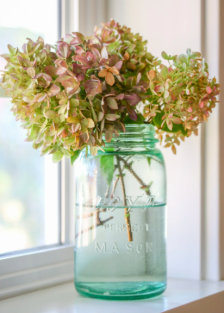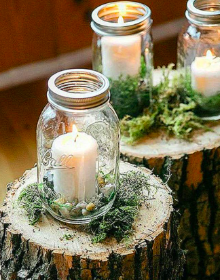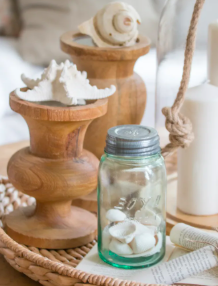
The Charm of Vintage Mason Jars: How to Identify Their Age and Value
- vintagebirchdesign
- Jun 29
- 2 min read
There’s something irresistible about old mason jars. Maybe it’s their classic blue-green tint, the stories they hold from bygone kitchens, or how beautifully they serve as rustic décor today. But if you’ve ever wondered whether the jar you found is truly an antique or if it’s worth anything, here’s how to start unraveling the mystery.
Look at the Color
The first clue is often the color. Most modern jars are clear, but jars made before the 1930s often have a lovely aqua or light blue tint. This is caused by iron impurities in the sand used to make glass. Clear jars didn’t become widespread until around World War I.
Examine the Seams and Mold Marks
Older jars were made in molds, and you can learn a lot by looking at the seams:
Pre-1915 jars: These often have seams that stop before the lip of the jar. The tops were hand-finished with a tool.
Also look underneath older jars often have pontil marks (a scar from where glass was broken off a rod), while later jars will have smoother bases or a mold number.
Post-1915 jars: Seam lines usually go all the way up through the lip, indicating a machine-made process.
Check the Logo and Embossing
The easiest way to tell the age of your jar is the logo. Ball and Atlas are two of the most famous brands. The style of their logos changed over time, which is great for dating jars.
Notice Special Features
Zinc lids with milk glass liners: Popular before the 1950s, these screw caps are a classic sign of older jars.
Wire bale closures: These glass-topped jars with wire clamps were made from the late 1800s into the early 1900s.
Patent dates: Some jars have patent dates embossed on them. These are often not the date of manufacture but give a clue to the earliest possible age.
Consider Condition and Rarity for Value
When it comes to value, here’s the quick breakdown:
Common clear Ball or Kerr jars: Typically under $10, unless they have unusual shapes or embossing.
Blue Ball jars: Often $10-20, more if older or with rare embossing.
Unusual colors (amber, green, cobalt): These can easily fetch $50 to $200+.
Mint condition matters: Chips, cracks, cloudiness from mineral deposits, or missing lids all reduce value.
Get Creative with How You Use Them
Even if your jar isn’t a rare collectible, vintage mason jars are perfect for decorating. Fill them with fairy lights, fresh flowers, or pantry staples for a cozy farmhouse touch. They’re timeless, versatile, and always more interesting than a box of pasta.
You can find mason jars at the Junction in various booths throughout the store. Looking for something specific? Just ask!
Want to read more? Check out these sources...
Ball Mason Jar Collector’s Guide
A helpful site with timelines and photos of the different Ball logos and styles through the decades.
Mason Jar Collector’s Website (Hoosier Jar)
Detailed charts and guides for dating mason jars by embossing and shape.



















Comments